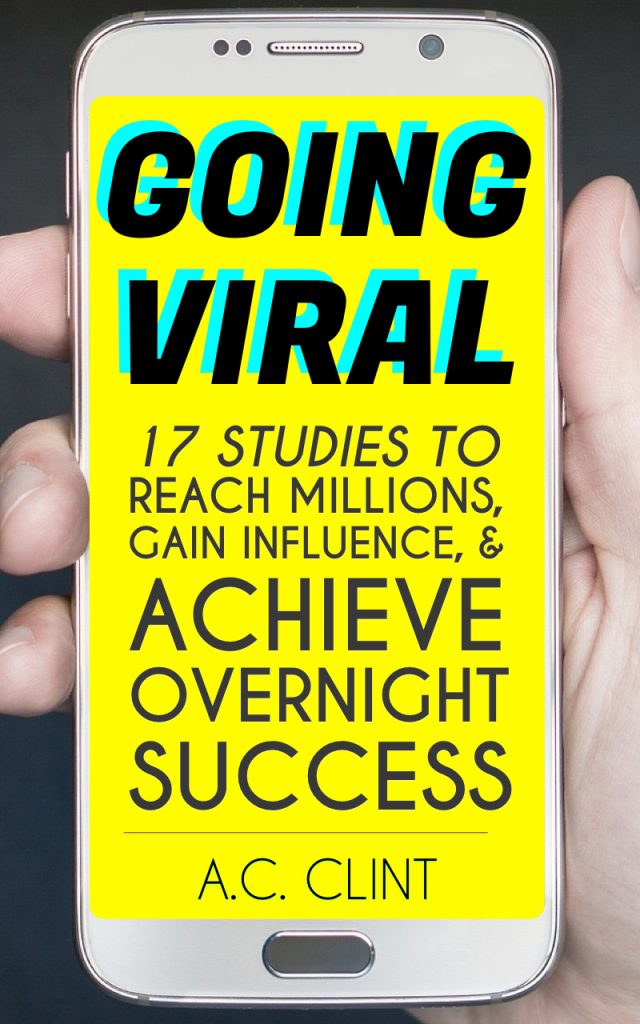It doesn’t matter if you are giving a TED talk or going on a first date, story-telling will make you a more interesting person, and a more persuasive communicator.
Whether it’s a “Breaking Bad” binge, a Jane Austen remake, or a pal telling us about the crazy night they had at the bar on Saturday, everyone loves a good story.
Have you ever had to sit through a boring PowerPoint presentation in a class or a meeting? It can be rough trying to focus.
When someone relays a dry piece of information to you, it activates only one part of your brain called the “Broca’s area and Wernicke’s area”. This is the part of the brain we use to decode words into meaning. And that’s it. Nothing else happens.
When we are told a story, something completely different occurs: our entire brain begins to light up like fireworks. The Broca’s area and Wernicke’s area activates to decipher the text, but then more brain regions perk up as well, vicariously experiencing the story we are being told.
Plain old text only activates the word-processing part of our brain. However, sensory words elicit responses that cause us to be more emotionally and physically involved in what we are listening to or reading.
In a 2006 study published in the NeuroImage journal, researchers in Spain asked participants to read words with strong odor associations, while scanning their brains with an MRI machine.
When reading words associated with inanimate objects like “chair” and “key”, the sensory cortex remained dark. However, when subjects looked at Spanish words associated with strong-smelling things like “perfume” and “coffee”, the part of the brain that recognizes smell (primary olfactory cortex) completely lit up.
When I describe a buttery, lobster dinner I ate last night, your sensory cortex lights up. If I tell a story about running from a thief, your motor cortex gets going and you start running along with me. This makes storytelling elements such as metaphors and descriptive words all the more powerful.
“Metaphors like ‘The singer had a velvet voice’ and ‘He had leathery hands’ roused the sensory cortex. […] Then, the brains of participants were scanned as they read sentences like “John grasped the object” and “Pablo kicked the ball.” The scans revealed activity in the motor cortex, which coordinates the body’s movements.” – Annie Murphy Paul, “Your Brain on Fiction”, The New York Times, 2012.
Because our imagination is so strong, listening to a well-written story is almost as good as experiencing it in real life. Certain words and storytelling techniques activate sensory regions of the brain, which means listening to well told stories can cause an audience’s neural and brain behavior to mimic that of a speaker.
According to Uri Hasson from Princeton, telling stories that have really impacted one’s life can spark a listener’s interest so profoundly that the two brains begin to actually sync:
“When the woman spoke English, the volunteers understood her story, and their brains synchronized. When she had activity in her insula, an emotional brain region, the listeners did too. When her frontal cortex lit up, so did theirs. By simply telling a story, the woman could plant ideas, thoughts and emotions into the listeners’ brains.”
This means the art of storytelling can allow others to experience things the same way you have experienced them, by activating their brain in the same way your brain has been activated.
Is storytelling the literal ability to control other people’s brains? It’s a scary thought, but also an exciting one. We can weave magical spells around us with the right combination of words.
How can you tell a story that will illuminate all of the dendrites in your audience’s brain?
Storytelling is easier than you think. The brain automatically seeks out patterns and anomalies to help us make sense of the world. This is why we find faces in clouds, songs in sound beats, and story patterns in information.
The ancient language of storytelling has helped our brain make sense of the world for as long as words have been strewn together into sentences. Our impulse to detect story patterns is so powerful that we can find them even when they’re not there.
I even have a story about that. Watch this video and think about what you see:
In 1944, Fritz Heider & Marianne Simmel held the landmark study ‘An Experimental Study of Apparent Behavior’ in which thirty-four Massachusetts college students were shown the short film (above) featuring two triangles and a circle moving across a two-dimensional surface.
When asked what had happened in the film, the students imagined elaborate narratives and vivid emotional motives. A common plot theme detected among the shapes included interpreting the triangles as two men fighting, and the circle as a woman trying to escape the bullying triangle. The subjects attached emotions such as fear or anger to the geometric shapes.
Only one test subject saw this scene for what it was: geometric shapes moving across a screen. That is how easy it is to tell a story. Humans can anthropomorphize almost anything without dialogue, music, or even structure.
To be a really potent communication form, stories will typically draw upon devices like archetypes and plot structure to keep us engaged and involved. I’m going to share a few story formulas with you that will make your next email, conversation, keynote presentation, or viral video explode with success.
My special story-telling formula is based on an element of the human condition that will resonate with nearly everyone: DESIRE.
DESIRE is what drives us, plagues us, brings joy, and motivates us to reach new heights and depths of the human experience. There are entire religions based upon eliminating it from your life, with the ironic twist that the need to eliminate desire is a desire within itself.
To put desire into a formula, writers, actors, and storytellers use something called beats. Without diving too deeply into Screenwriting 101, beats are small desires characters have through a story that gets them from one moment to the next. They are small or large desires that drive behavior.
Longer stories, like movies and television series, are broken up into a series of “beats”, represented by moments in which characters take actions to get where he or she wants.
A story almost always features a hero or protagonist who wants something and is going after it. They either get it, or don’t get it, but catharsis occurs in an audience if the hero ultimately learns something from their experience.
How to tell a great story:
Think of a hero (it can be yourself or someone you know, or you can just make one up).
Example: Let’s say you are the hero.
Give the hero a desire.
Example: As the hero, you wake up one morning. You are hungry and want a banana.
Put an obstacle (or several) in the way of the hero.
Example: You check the fridge, and the banana is gone. Did your roommate eat the last banana?
Make the hero try to solve or overcome the obstacle.
Example: You go to the grocery store, and they are out of bananas. You write an angry letter to all of your roommates, trying to figure out who ate the banana. When no one comes clean, you try to uncover hidden clues as to who ate the banana. You are the now Nancy Drew in the “Mystery of the Missing Banana”, interrogating suspects and getting your hands dirty.
The hero either solves it or doesn’t solve it, but learns something in the process. A hero’s growth is a critical component to a reader’s catharsis effect.
Example: After berating your roommates over email, a memory flashback reveals you actually ate the banana and forgot about it. You might not have your banana, but you’ve learned it is silly to blame other people for your overzealous appetite and memory gaps. You buy everyone a bushel of bananas, laugh it off, and grow as a person.
*Disclaimer: This story may or may not have been inspired by my old roommate.
Ultimately, creating a killer story is all about highlighting a struggle or conflict. This struggle is often in the form of the antagonist. In the banana story, the antagonist is a roommate (we think). But, in a surprise twist, the antagonist is the hero herself.
This is what makes stories a really addicting socially acceptable drug, and what drives the multi-billion dollar entertainment industry.
Stories don’t have to be complicated to be engaging. Often stories feature a beginning, middle, and typically end in a resolution. It is all the more effective if there is a protagonist who wants something, and finds a way to get it in the end.
Wanting something and facing obstacles towards getting it creates conflict, and conflict creates suspense. The longer and more complex it is for the story’s hero to succeed, the more invested we become. The protagonist can be working towards a bigger goal, or something small.
Loglines, Elevator Pitches, Headlines, and Tweets
Every story, sitcom, movie, viral video, or novel can be distilled into what is known in the film biz as a “logline”. Viral sensations also have their own logline in the form of an abbreviated tweet, meme, or headline that typically goes viral.
Viral Video Producer Karen X has skyrocketed to viral fame a couple of times, in large part because of her ability to churn out brilliant one-line hooks for her three-minute viral stories.
Her viral video “Girl Learns to Dance in a Year (TIME LAPSE)” has over six million views, in part because she is able to highlight desire and conflict in a simple video headline: Girl (the hero) wants to dance, and perseveres with practice to accomplish her goal in a year.
Both of these headlines pack a viral punch using numbers, desire, conflict, and accomplishment, along with the promise of awe and the unexpected.
Story is first a formula, and second, a beautiful reflection of the human condition. We all find meaning in our lives by overcoming obstacles and learning lessons. Watching and listening to stories is a way for us to take part in the profound experience, often in ninety minutes or less.
We don’t actually have to get off our couch to embark on an epic journey through the underworld, or battle good versus evil, and maybe even earn a takeaway experience or lesson.
When communicating about your professional brand or personal life, consider if there is a possible story behind it. And if so, how will you tell it?
Now that you know the basic story structure and formula, find out how you can paint the color of this framework with my book ‘Going Viral: 17 Studies to Reach Millions, Gain Influence, & Achieve Overnight Success‘.
It is on sale right now (this week only), and you can get it here: http://amzn.to/2xM4nUl


